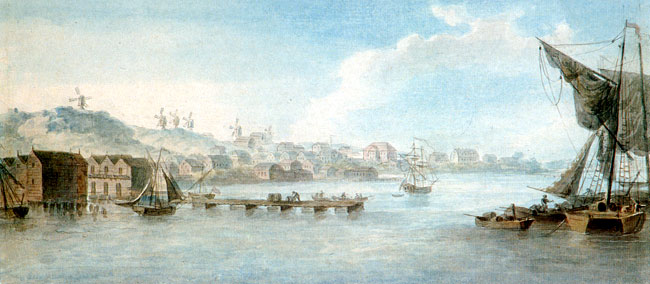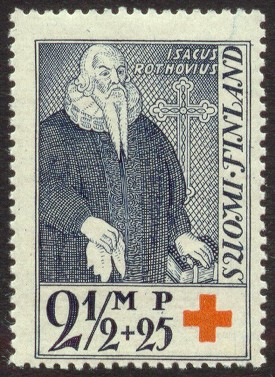|
Myrskylä
Myrskylä (; sv, Mörskom) is a municipality of Finland. It is located in the Uusimaa region and it is the smallest municipality in the region in relation to its population; the municipality has a population of () and covers an area of of which is water. The population density is . Neighbouring municipalities are Askola, Porvoo, Pukkila, Orimattila, Lapinjärvi and Loviisa. The Myrskylä parish was founded in 1636 when it was separated from Pernå by Isaacus Rothovius, the Bishop of Turku, and confirmed by Christina, the Queen of Sweden. Geography There are many lakes connected to the Myrskylänjoki watershed. These lakes are Pöyrysjärvi, Isojärvi, Vähäjärvi, Muttilanjärvi, Siippo, Sopajärvi, Kirkkojärvi and Sulkavanjärvi. Villages Hallila, Hyövinkylä, Jaakkola, Kankkila, Myrskylä (''Kirkonkylä''), Pakila and Kreivilä. Demographics The municipality is bilingual, with majority being Finnish and minority Swedish speakers. Myrskylä is the bi ... [...More Info...] [...Related Items...] OR: [Wikipedia] [Google] [Baidu] |
Myrskylä (village)
The Myrskylä church village (also known as Myrskylä; fi, Myrskylän kirkonkylä, sv, Mörskom kyrkoby) is a village and the administrative center in the municipality by the same name in Eastern Uusimaa. It is located on the western shore of a lake called Kirkkojärvi. The center of the nearest town, Orimattila, is less than 20 kilometers to the north. The village is home to the Myrskylä Church, which was inaugurated in 1803. Many other of the municipality's main services are also located in the church village, including the Sale grocery store, health center, pharmacy, library and the Osuuspankki bank. The village also has an elementary school A primary school (in Ireland, the United Kingdom, Australia, Trinidad and Tobago, Jamaica, and South Africa), junior school (in Australia), elementary school or grade school (in North America and the Philippines) is a school for primary ed ... founded in 1872.Suomenmaa, maantieteellis-taloudellinen ja historiallinen tietokirj ... [...More Info...] [...Related Items...] OR: [Wikipedia] [Google] [Baidu] |
Pöyrysjärvi (Myrskylä)
Pöyrysjärvi is a lake surrounded by the open bog on the border are of the town of Orimattila and municipality of Myrskylä. It is classed as a precious natural reserve in Päijänne Tavastia county. Apart from that the city of Orimattila classifies it as an important object for teaching of marsh types and its fauna. The other lakes connected to the Myrskylänjoki watershed are Isojärvi (Myrskylä), Isojärvi, Vähäjärvi (Myrskylä), Vähäjärvi, Muttilanjärvi, Siippo, Sopajärvi, Kirkkojärvi (Myrskylä), Kirkkojärvi and Sulkavanjärvi. Environmental issues The town of Orimattila measures every fifth or sixth year some parametres related to the water. 10 July 2006 the results were: *solids: 0,029 g/L *oxygen-%: 24.0 (on the surface) / 8.87 mL/L (on the surface), 11.3% (on the bottom) / 1.1 mL/L (on the bottom) *Redox pot. (Mv): 307.0 *pH: 4.2 *total phosphor: 15 μg/L *total nitrogen: 380 μg/L *total chlorophyll: 15 μg/L References Sources *Jarviwik Lakes of M ... [...More Info...] [...Related Items...] OR: [Wikipedia] [Google] [Baidu] |
Uusimaa
Uusimaa (; sv, Nyland, ; both lit. 'new land') is a region of Finland. It borders the regions of Southwest Finland, Tavastia Proper (Kanta-Häme), Päijänne Tavastia (Päijät-Häme), and Kymenlaakso. Finland's capital and largest city, Helsinki, along with the surrounding Greater Helsinki area, are both contained in the region, and Uusimaa is Finland's most populous region. The population of Uusimaa is 1,723,000. While predominantly Finnish-speaking, Uusimaa has the highest total number of native speakers of Swedish in Finland even at a much lower share than two other regions. History The place name of Nuuksio derives from the Sami word which means ' swan.'' Later Finns proper and Tavastians inhabited the area. Some place names have traces of Tavastian village names, like Konala, which likely derives from the older Tavastian village name ''Konhola''. Estonians inhabited the region to a smaller extent, specifically for seasonal fishing. Swedish colonisation of coasta ... [...More Info...] [...Related Items...] OR: [Wikipedia] [Google] [Baidu] |
Porvoo
Porvoo (; sv, Borgå ; la, Borgoa) is a city and a municipality in the Uusimaa region of Finland, situated on the southern coast about east of the city border of Helsinki and about from the city centre. Porvoo was one of the six medieval towns of Finland, along with Turku, Ulvila, Rauma, Naantali and Vyborg. It is first mentioned as a city in texts from the 14th century. Porvoo is the seat of the Swedish-speaking Diocese of Borgå of the Evangelical Lutheran Church of Finland. Porvoo was briefly the capital of the former Eastern Uusimaa region. Porvoo Old Town ( fi, Porvoon vanhakaupunki; sv, Borgås gamla stan) is a popular tourist destination, known for its well-preserved 18th- and 19th-century buildings, and the 15th-century Porvoo Cathedral. The Old Town and the Porvoonjoki River Valley are recognized as, together, one of the National landscapes of Finland. The municipality's official languages are Finnish and Swedish. In 2014, 64.6% of the population spoke Finnish ... [...More Info...] [...Related Items...] OR: [Wikipedia] [Google] [Baidu] |
Askola
Askola () is a municipality of Finland. It is located in the Uusimaa region. The municipality has a population of () and covers an area of of which is water. The population density is . Monninkylä is the largest village of municipality in terms of population (1,326 inhabitants). Neighbouring municipalities are Myrskylä, Mäntsälä, Pornainen, Porvoo and Pukkila. The municipality is unilingually Finnish. Askola is one of three municipalities in the Uusimaa region that do not have a Swedish name; the others are Nurmijärvi and Mäntsälä. History The Askola parish was part of Porvoo until 1639, when it became a chapel parish, and finally became independent in 1896. The Askola church was completed in 1799. The coat of arms of the municipality seeks influence from the history of the parish; the millstone is reminiscent of the Askolas's many mills and famous breads, while the roses of the coat of arms refer to Finnish author Johannes Linnankoski, who was born and influence ... [...More Info...] [...Related Items...] OR: [Wikipedia] [Google] [Baidu] |
Lapinjärvi (municipality)
Lapinjärvi (; sv, Lappträsk) is a municipality of Finland. It is located in the Uusimaa region. The municipality has a population of () and covers an area of of which is water. The population density is . Neighbouring municipalities are Iitti, Kouvola, Loviisa, Myrskylä and Orimattila. The municipality is bilingual, with majority being Finnish and minority Swedish speakers. Lapinjärvi lake is located near the administrative village center in Lapinjärvi. Politics Results of the 2011 Finnish parliamentary election in Lapinjärvi: *Swedish People's Party 33.2% * Centre Party 16.8% *True Finns 16.2% *National Coalition Party 11.2% *Social Democratic Party 10.4% *Green League 4.3% * Left Alliance 3.9% *Christian Democrats 2.1% People born in Lapinjärvi *Gustaf Rosenqvist (1855–1931) * Vilhelm Rosenqvist (1856–1925) *Hilda Käkikoski (1864–1912) *Otto Slätis (1864–1940) * Johan Strömberg (1868–1952) * Gustaf Storgårds (1869–1945) * Mikko Innanen (1978 � ... [...More Info...] [...Related Items...] OR: [Wikipedia] [Google] [Baidu] |
Pukkila
Pukkila (; Swedish: ''Pukkila'', also ) is a municipality of Finland. It is located in the Uusimaa region. The municipality has a population of () and covers an area of of which is water. The population density is . The municipality is unilingually Finnish. The ''pukki-'' part of the municipality's name means "male goat", which is why the name of the municipality literally means the "place of goat". Pukkila has previously also been called ''Savijoki'' ("Clay River") and, in local colloquial language, ''Vähä-Porvoo'' ("Lesser Porvoo"). In 1962, a former villager, Onni Nurmi, bequeathed the village 760 shares in a company called Nokia - then chiefly known as a manufacturer of rubber workboots - on condition that the income be used for the benefit of the elderly and that the shares would never be sold. After a legal battle the shares have now been diversified and the income used to fund a welfare centre and services for the elderly. Sights Pukkila includes the Naarkoski rapids w ... [...More Info...] [...Related Items...] OR: [Wikipedia] [Google] [Baidu] |
Orimattila
Orimattila () is a town in Päijänne Tavastia regions of Finland, region, Finland. The southern part of Lahti is connected to the village of Orimattila, which is located in the region of Pennala. There are also several municipalities in the area, such as Iitti, Kärkölä, Lahti, Mäntsälä, and Pukkila. Orimattila has a population of (), and it covers an area of 310.29 square kilometers. Its area of land is 28.87 square kilometers, which is filled with water. The municipality is also unilingually Finnish language, Finnish. Its per-capita population is around 20.14. The subject of the coat of arms of Orimattila, "a Stallion, stallion horse carrying a scythe", refers to both the name of the municipality and local agriculture. The name itself comes from a house called ''Orhimattila'', hosted by Henrich Mattzsson Orhimattila, which was already written in a 1573 book of judgment. The coat of arms was designed by Ahti Hammar and approved by the Orimattila Municipal Council at its mee ... [...More Info...] [...Related Items...] OR: [Wikipedia] [Google] [Baidu] |
Loviisa
Loviisa (; sv, Lovisa ; formerly Degerby) is a municipality and town of inhabitants () on the southern coast of Finland. It is located from Helsinki and from Porvoo. About 43 per cent of the population is Swedish-speaking. The municipality covers an area of of which is water. The population density is . The neighboring municipalities of Liljendal, Pernå and Ruotsinpyhtää were consolidated with Loviisa on 1 January 2010. Loviisa was founded in 1745, as a border fortress against Russia. Most of the fortifications have been preserved. Loviisa was originally called ''Degerby'', but king Adolf Frederick of Sweden renamed the city after his spouse Lovisa Ulrika after visiting the town in 1752. Loviisa is the site of two of Finland's nuclear reactors, two VVER units each of 488 MWe, at the Loviisa Nuclear Power Plant. The other operating reactors are at the Olkiluoto Nuclear Power Plant. History 18th century The town of Degerby was founded on the grounds of the ... [...More Info...] [...Related Items...] OR: [Wikipedia] [Google] [Baidu] |
Isaacus Rothovius
Isaacus Rothovius (1 November 1572 – 10 February 1652) was the Bishop of Turku from 1627 till 1652. Family Rothovius was born in Småland in southern Sweden in 1572, the son of a farmer Börje Larsson. Rothovius' grandfather was a German immigrant captain named Lorentz Roth. Rothovius' twin brother, Jonas Rothovius, was the Superintendent of Kalmar from 1618 till 1626. Education Rothovius at several upper secondary schools and in 1595 went to Uppsala, where in 1597 he became a teacher to the brothers Axel Oxenstierna, Krister Oxenstierna and Gabriel Oxenstierna, with whom he went to Germany that same year and visited the universities in Rostock and Wittenberg. While in Wittenberg, Rothovius acquired a Master of Philosophy in 1602. He was also ordained a priest in 1602. Later he returned to his homeland and was appointed in 1603 to be vicar of Nyköping, where he remained until 1627. Bishop In 1627 he was appointed as Bishop of Turku, however he did not speak Finnish wh ... [...More Info...] [...Related Items...] OR: [Wikipedia] [Google] [Baidu] |
Isojärvi (Myrskylä)
{{disambiguation ...
Isojärvi may refer to: * Isojärvi (Kuhmoinen), a lake in Finland * Isojärvi (Satakunta), a lake in Finland * Isojärvi National Park Isojärvi National Park ( fi, Isojärven kansallispuisto) is a national park in Central Finland. It covers and was established in 1982. Its scenery is fluctuating by its level and the vegetation is dominated by Scots pine and Norway spruce fores ... [...More Info...] [...Related Items...] OR: [Wikipedia] [Google] [Baidu] |



